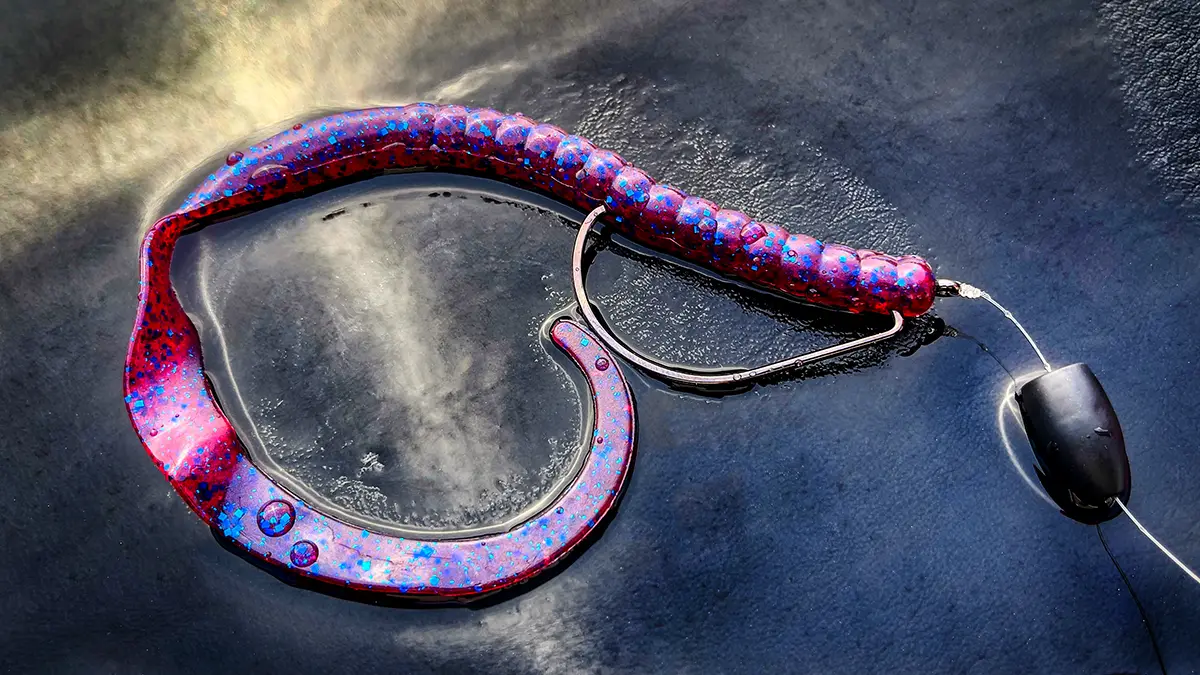The Texas rig is a versatile and effective fishing technique that allows anglers to navigate through various types of cover without getting snagged. It’s not only a practical approach for fishing in thick cover but also a versatile rig suitable for a wide range of fishing conditions. Whether you’re in shallow waters or depths of up to 70 feet, the Texas rig can adapt with a simple adjustment of the slip sinker.
Key Benefits and Applications:
The Texas rig’s adaptability and effectiveness make it a crucial rig for anglers to master. It is equally suited for both bank fishing and boat fishing, making it suitable for various water bodies, including creeks, rivers, ponds, lakes, and large reservoirs. This rig is known for its versatility and the variety of fishing situations it can handle.
Rigging the Texas Rig:
Creating a Texas rig is straightforward and requires a few essential components: a bullet-shaped slip sinker, an offset or straight shank hook, and a soft plastic bait of your choice. The rigging process involves threading the hook point through the worm’s nose, poking the hook point back out through the worm’s side, and then adjusting the worm’s position on the hook. Burying the hook point inside the plastic ensures it’s well-guarded and weedless.
Hooks and Weights:
Preferred hooks for Texas rigging include offset worm hooks or Extra Wide Gap (EWG) hooks, chosen based on the type of soft plastic bait being used. Tungsten weights are recommended for their durability and better contact transmission compared to lead weights. The choice of weight depends on the fishing conditions, cover density, and desired lure action.

Fishing Setup:
Anglers can use both baitcasters and spinning tackle for Texas rigging. A 7-foot Medium Heavy rod with tip action is optimal for casting control and providing the backbone required for effective hook sets. Using fluorocarbon line between 12 to 20-pound test is recommended, with lighter line suitable for clear water and deeper fishing.
Fishing Techniques:
The Texas rig can be fished using two main retrieves. One involves lifting the rod to swim the worm off the bottom and reeling in the slack as it falls. The other method employs slow, inch-by-inch pulls with a side-sweeping motion. For close cover fishing, keeping the rod at about 10 o’clock position is advised to facilitate quick hook sets.
Modifications and Variations:
Anglers often add modifications to enhance the Texas rig’s effectiveness. These can include using a bobber stop in front of the slip sinker to prevent tangling, adding beads or rattles for noise attraction, and employing a technique called “Tex-posing” where the hook point is partially exposed for easier hook release. Modifications can be tailored to the fishing environment and specific conditions.
Mastering the Texas rig is essential for anglers due to its adaptability and proven success across various fishing scenarios. Its ability to navigate through cover and its flexibility in presentation make it a go-to choice for both beginners and seasoned anglers looking to increase their fishing success.
Images/Source: Wired2Fish





